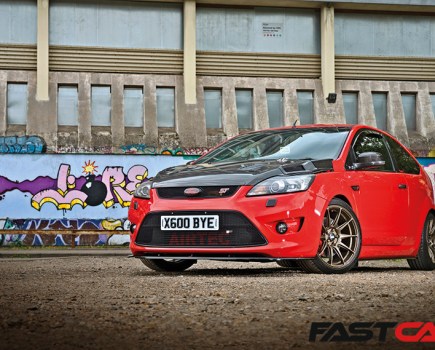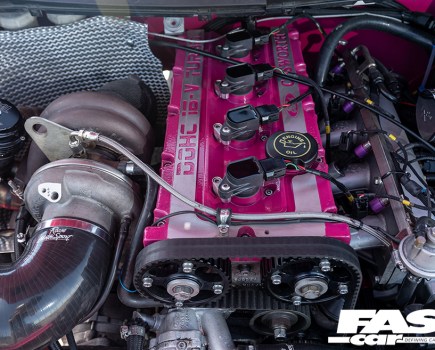The first Ford RS200 to leave Boreham destined for privateer use has quite a tale to tell. Fast Ford reveals the full story.
Feature from Fast Ford magazine. Words and photos: Robb Pritchard.
With more than 40 original ex-works rally cars from the 1970s to 2010, Jiri Jirovec has what is unofficially the largest private collection of race and rally cars in the world. The huge, purpose-built warehouse in the Czech Republic is not open to the public, but we have been given privileged access to wander around slack-jawed to stare appreciatively at such jewels as four ex-McRae WRC Focuses, Malcolm Wilson’s 1993 Group-A Escort Cosworth, and a Sierra that came close to winning the DTM.
This month we look at the legendary Ford RS200 in his epic collection.
If, by some chance you don’t know what a Ford RS200 is, don’t be fooled by its innocent frog-like eyes and the cute little bunny ears; it is a real beast. The fact that it was the fastest accelerating production road car for an incredible 12 years is just a footnote, as it was created for the sole purpose of dominating the world of rallying.
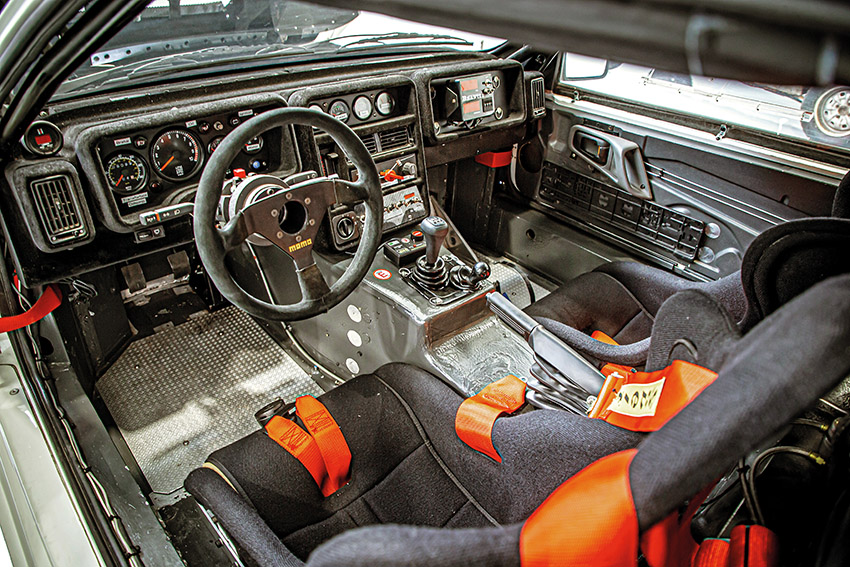
Delayed by the aborted RS1700T project, the all-out competition car was late on the scene compared to rivals from Peugeot and Lancia, and with just four rallies entered, 1986 was supposed to be its development year. The fully fettled version was expected to excel in 1987 but ended up being rendered obsolete when the Group B monsters were abruptly banned in favour of the much safer, but less spectacular, Group A class.
Group B was, and still is, wildly popular as the rules allowed almost anything to be rallied, with the one major proviso that 200 identical road cars had to be produced. This homologation process protected the big manufacturers from being embarrassed by small workshops that could produce a world-class rally car but didn’t have the resources to produce 200 road cars.
Eventually all RS200s were sold, either to those who wanted a supercar for the road, or for privateers to use in rallying and rallycross.
The very first Ford RS200 to leave Ford’s plant in Boreham into the hands of a privateer was chassis 082. The lucky owner was Jeff Churchill, a British clubman driver and owner of Ford-affiliated Jeff Churchill Motorsports.
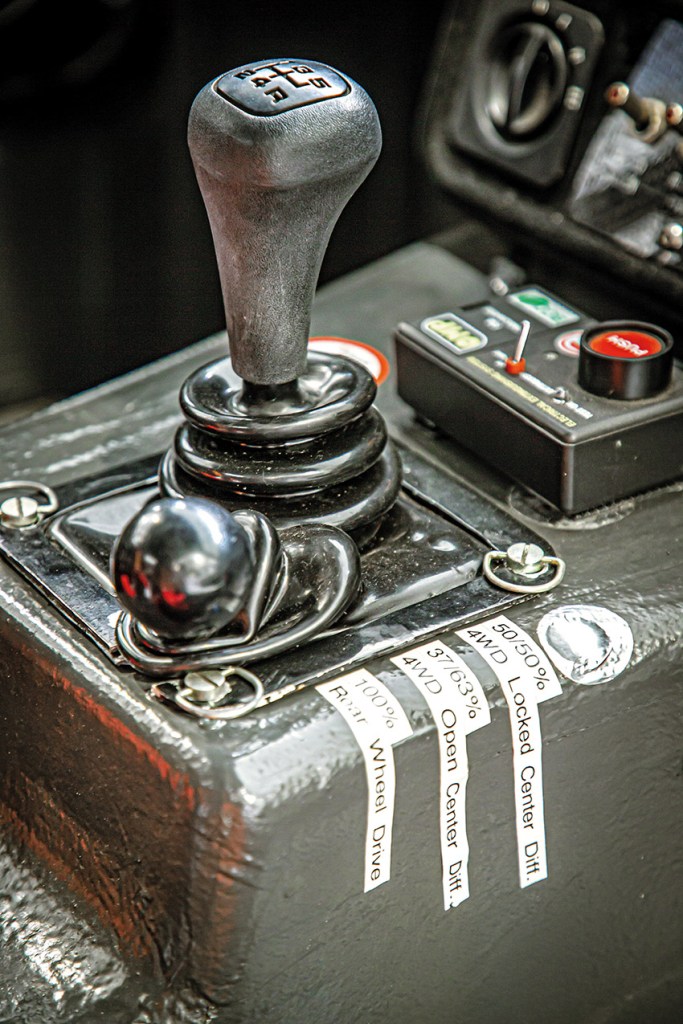
Born in South Wales, Jeff began his 30-year rallying career in the early 1960s, dipping his toe into local Welsh events in a Cortina before upgrading to a Mk1 Escort Twin Cam and then an RS1600 until the mid-1970s.
For the next ten years he competed exclusively in Mk2 RS1800s, sometimes ex-works examples from Boreham’s workshop. He picked up a few wins and finished fourth overall in the 1981 UK national championship.
His day job was running a large car and van rental fleet in South Wales, and he took the same business plan to the forests so that it was through his rental rally cars that his name is most well-known.
The fleet of Mk2 Escorts under the JC Motorsports banner in the late 1970s and early 1980s included some now priceless Escorts. Bjorn Waldergaard’s 1979 world championship winner, Roger Clark’s famous 1976 RAC winner (POO 505R), and the ex-Peter Clarke Group 4 car (to be featured here soon) were all cars with a proven pedigree available for hire. Notable drivers in his cars included Patrick Snijers and Robert Droogmans, both of whom won rallies in the hotly contested Belgian rally championship in 1981 and ‘83.
A Ford man since his formative experience in the Welsh forests, and with the venerable Escort becoming less and less competitive against the new 4×4 machinery making its way onto the national scene, for 1986 Churchill was at the very front of the queue for one of Ford’s new Group B monsters.
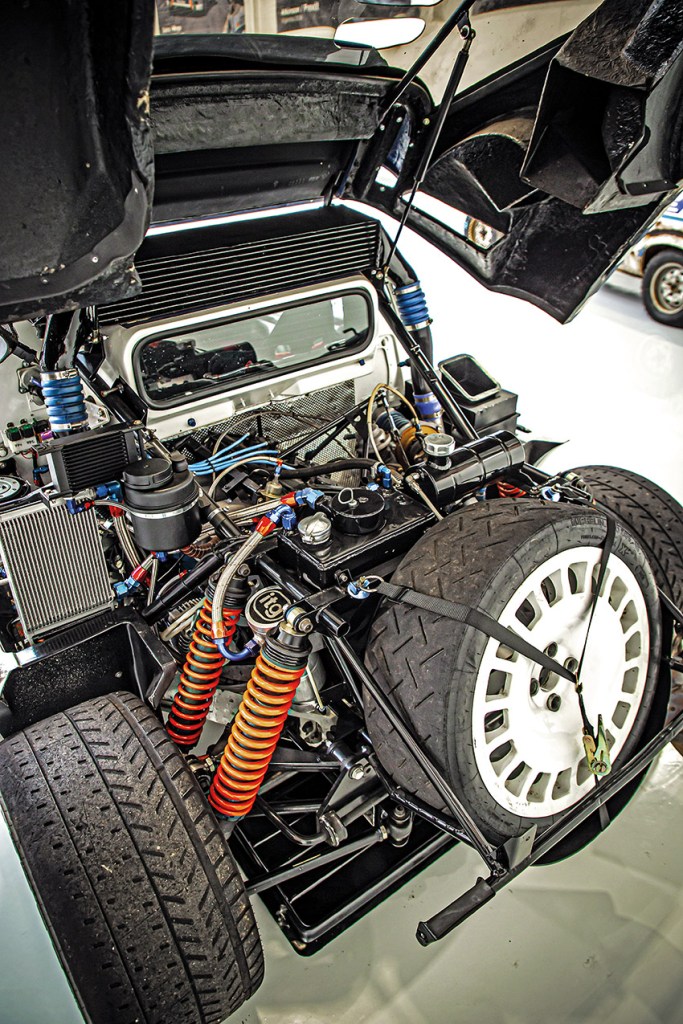
Chassis 082 was originally delivered to Jeff as a standard Ford RS200 with the conversion kit to turn it into a proper rally car, although one far short of the full works spec. The road cars had different suspension from the works versions, with much softer rubberised connections, while the motorsport versions had rose joints and adjustable roll bars. Other upgrades included foam-filled fuel tanks, stronger suspension arms, competition clutch, fire extinguishers, competition seats and belts, and underbody guards.
The biggest difference was in power, though. No works rally or race team really enjoys being beaten by their rivals, but worse would be getting shown up by a privateer team running the same car. So that this could never happen, the EEC-IV electronic management system capped the car at a maximum of 350bhp. This was 80bhp down on the works cars, which had Bosch Motorsports Motronic MS90 ECUs. Depending on turbo boost levels, these put out 430bhp.
Jeff’s first event in the new car was the 1986 International Welsh Rally, where he ran as the course car to get an opportunity to get used to the extra power and four-wheel-drive layout. It was the National Championship events where he was most likely to be found, though. These were slightly less prestigious than the British Open Championship, but open to more interesting cars that didn’t need to fulfil strict homologation requirements. Clubman rallying in the Eighties saw such Ford creations as the 4×4 RED Sierras and the RWD (and occasional 4×4) Mk3 Escorts prepared by Gartrac. Opel Manta 400s, Nissan 240 RSs and the ubiquitous MG Metro 6R4s also filled the leaderboards.
Jeff ran chassis 082 in Ford Motorsport livery, but in a unique red rather than the factory blue. But while the car might have looked spectacular, Jeff didn’t exactly set the stages alight in it. In 1986, sixth on the Bridgend Stages was the only top-20 finish.
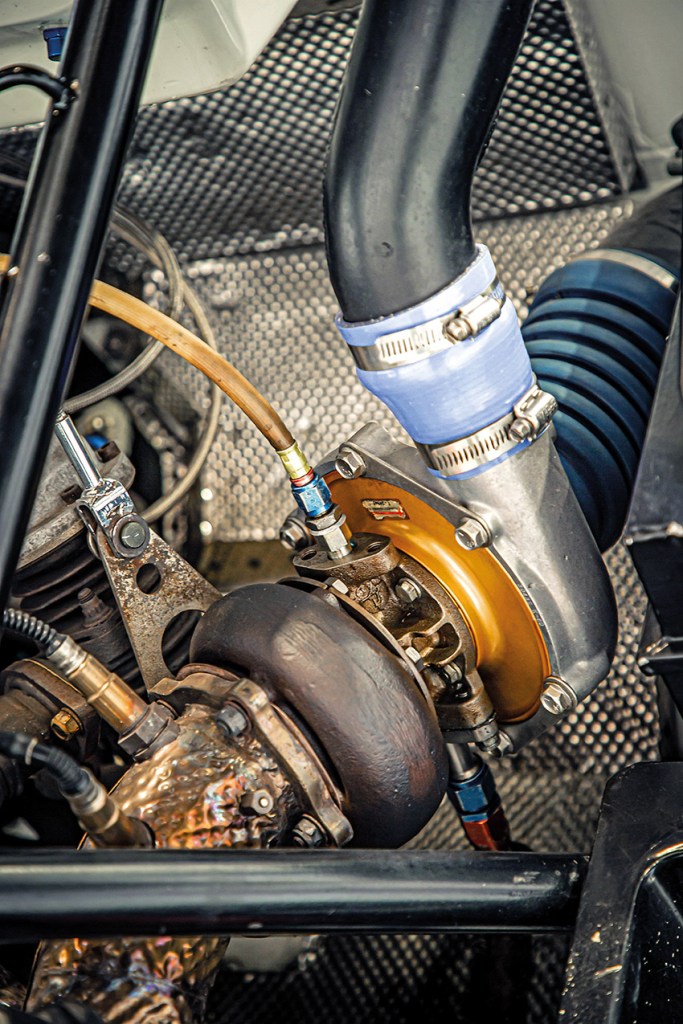
The following year saw a slight improvement when three retirements were tempered with a win in the clubman class of the Welsh Rally. But while chassis 082 was well looked after in the rallies, the car’s one brush with disaster came not on a stage, but in the back of trailer. Karl Davies, part of Jeff’s JC Motorsport team from 1981 until 1986, recounts how Jeff’s father Billy crashed the van carrying the RS200, putting the car and trailer on its side on the M50 motorway. Amazingly, chassis 082 was undamaged, and they pushed the trailer back onto its wheels and drove the Ford RS200 home.
Jeff campaigned chassis 082 for two years, and its competitive life finished at the end of 1987. It passed through a few hands over the years, none of whom ever competed in it. When it was nearly 20 years old, it had a nut-and-bolt rebuild at the hands of renowned RS200 expert Garry Campbell. This included some improved parts to bring it closer to full Group B specification, such as power steering, six-pot brakes, Evo radiator with twin fans and an oil cooler.
And after being kept in Germany for a few years, in 2013 it came to Jiri’s collection.
With a few of its previous owners changing details over the years, chassis 082 was far from road-car spec, yet wasn’t in perfect original Group B condition either. Jiri has rather stringent standards for the cars in his collection, and if you are going to find someone to check an RS200’s authenticity, there is one man whose opinion is worth more than most. John Wheeler is one of the men responsible for bringing the project to reality out of the ashes of the stillborn RS1700T project, and it was him who Jiri brought in to give it a thorough inspection.
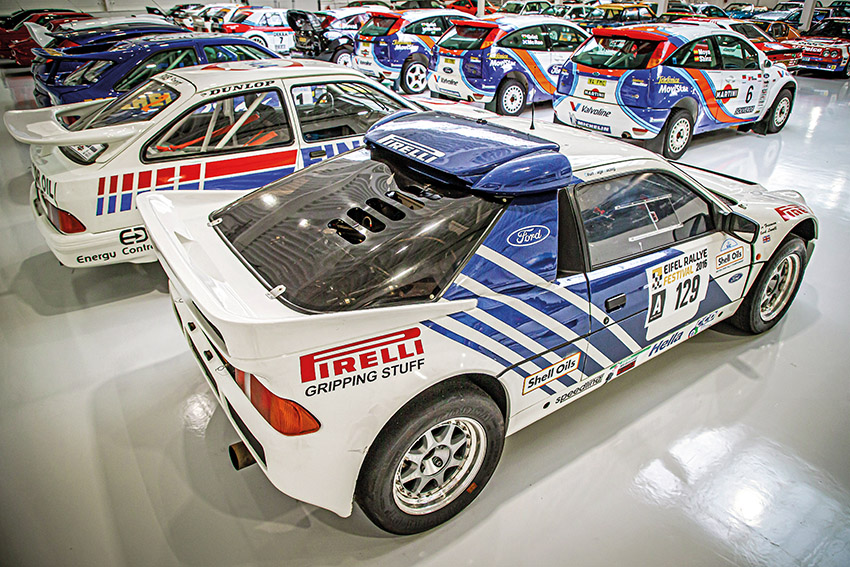
John explains that another significant difference between the rally and road versions was the unique gearbox; the road cars were fitted with much easier-to-use synchromesh gears with wider ratios, while the few built as rally cars had much quicker-changing dog-engagement versions with much shorter ratios. Subsequently, most RS200s have been fitted with much more user-friendly units developed by Xtrac for rallycross, and the few cars with provenance are kept pristine in collections.
That means original works-spec gearbox parts are seriously hard to find. John’s well-known Group S Evolution version is now fitted with a Quaife six-speed sequential ’box, so he agreed to sell Jiri the original gear set from his own car. The magnesium casings, differentials and viscous couplings are all the same, so it was just a case of installing the gears.
Chassis 082 might not have the history of some of its brethren, and John pointed out a few other minor details that were not quite period-correct, but Jiri diligently changed everything he could so that 082 is as close to perfect Group B spec as it’s possible to get.
Jiri chose to put it in the Mark Lovell/Roger Freeman livery because, as well as being a tribute, it was one of only two RS200s ever to win a rally championship for Ford. The other was Robert Droogmans in the 1986 Belgian Rally Championship, but Jiri already has two Droogmans’s Fords in his collection, so opted for the British blue-and-white colour scheme for this one.
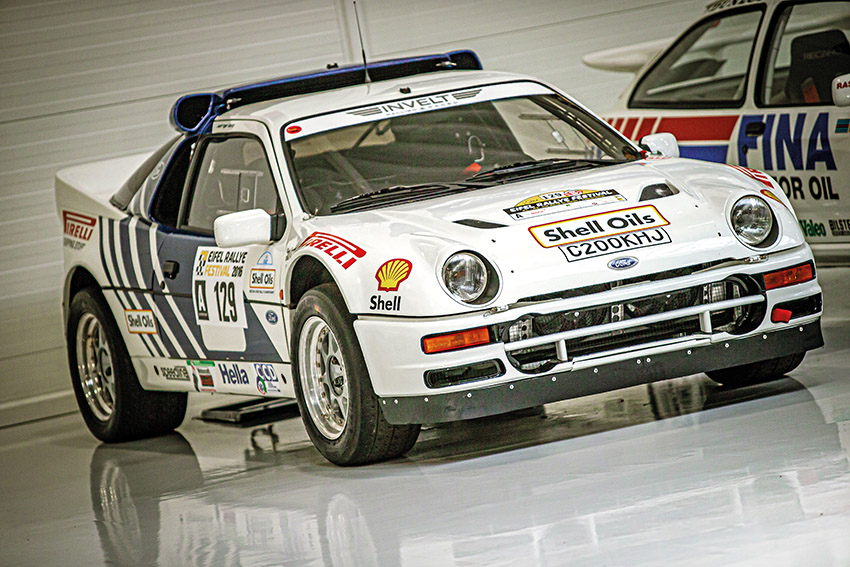
It may be living in an epic collection, but chassis 082 still does get out to stretch its legs on occasion. It was last seen in action on the popular Eifel Rally Festival in Germany in 2016, where Jiri got to test this monster on a proper rally stage. With over 40 years’ experience in rallies, hillclimbs and rallycross, Jiri’s no stranger to a quick car, but the Ford RS200 still puts a massive smile on his face.
It’s about time it came out again for another demo; we’d love to see it in action.











